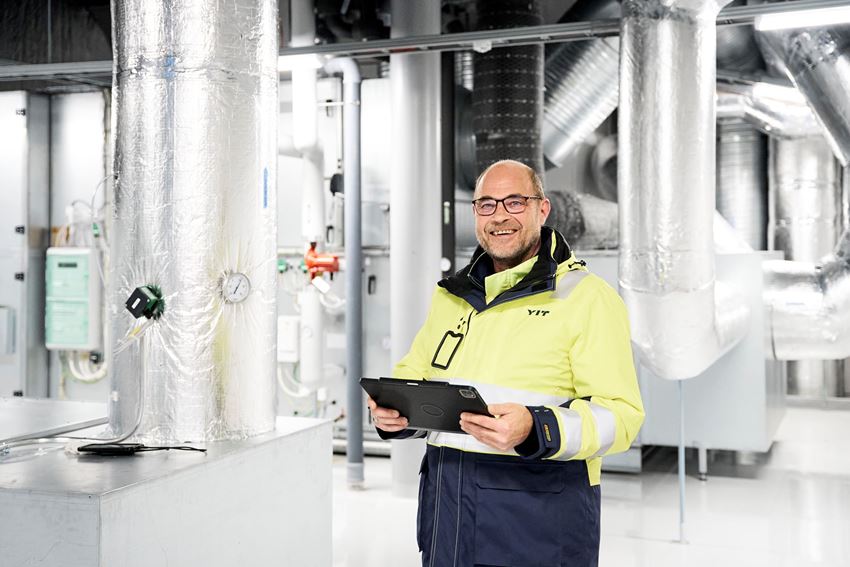Sustainable data centers as a service
- City
- Retail
- Premises
- Shops and retails
- 9/5/2019
A future-proof city needs both brick-and-mortar and online shops
Online shopping, urbanisation and consumers seeking experiences and responsibility will drastically reshape brick-and-mortar retail in the coming years. What will this mean for cities?

Business newspapers talk about the growth of online shopping on a weekly basis. It is true that the growth percentages for online shopping are fierce in some product groups; however, in some cases, it might be because their share of the overall revenue of a certain product group is still fairly small. According to research company AC Nielsen, the online sales of food increased by a whopping 44 per cent from 2017 to 2018. Nonetheless, online shopping made up only 0.4 per cent of all grocery shopping in Finland in 2018.
Even if shopping online is not necessarily becoming the predominant way of grocery shopping, the development has already taken buying appliances, entertainment electronics, shoes, clothing and many services to the internet. In March 2019, the Finnish Commerce Federation reported that Finns made EUR 2.9 billion worth of purchases digitally in 2018. The number has increased by six per cent since 2017. The trend is supported by ever faster logistics networks and transportation services.
In early August, the Finnish Commerce Federation published a forecast. According to that, jobs in the commerce sector will decrease and many specialty boutiques may have to close their doors for good as the popularity of shopping from foreign online stores increases and urbanisation progresses. The forecast predicts that more than a fifth of retail shops will disappear from Finland by 2030. Juha Kostiainen, EVP, Urban Development at YIT, points out that brick-and-mortar and online shops are not exclusionary from the perspective of the consumer. Most of us use both on a regular basis.
For instance, the Big Online Shopping Survey released by Posti in autumn 2018 states that almost half of Finns (47%) look for product information and ideas equally from the internet and brick-and-mortar shops. This means that companies in consumer retail should often invest in both channels – and as seamless an experience between them as possible.
“International e-commerce gives us access to products that are not necessarily available at all in Finnish brick-and-mortar shops. On the other hand, brick-and-mortar shops as an environment may offer social relations and experiences that online shops cannot deliver,” says Kostiainen, comparing the two.
From retail locations to spaces for consuming
Even though the volume of online shopping is on the increase, few consumer retail businesses can depend solely on the internet.In accordance with the Sustainable Urban Environments 2018 barometer carried out by YIT and Prior Konsultointi in autumn 2018, up to 80 per cent of Finnish city-dwellers prefer to shop in a traditional shop where they can select the products and purchases and can take them home immediately. Only one in ten preferred buying online and having purchases delivered to their home. The result did not vary much between different age groups.
Even digital-native e-commerce giants, such as Amazon, have opened brick-and-mortar shops in urban centres in the recent years.
“Online shops open flagship stores because they want to strengthen their brand. These kinds of stores are often located in places with already high visitor volumes. In Finland, these kinds of locations might include centrally located shopping centres. They are turning more and more into arenas of experience and enjoying yourself,” says Kostiainen.
Heli Marjanen, Professor of Economic Geography at the Turku School of Economics, confirms this observation. For years, she has studied the attractiveness of the Turku city centre, among other things.
“Instead of just hoarding things, people are now interested in new kinds of experiences. Physical commercial spaces are transforming from retail locations to spaces of consuming. Customers value accessibility, availability, price, quality, ease, comfort, experiences as well as responsibility. They look for a combination that is the perfect fit for them,” says Marjanen.
Dense urban structure supports specialty retail
But what will happen to brick-and-mortar outside the city centre? According to the Finnish Commerce Federation’s August forecast, specialty shops will concentrate even more strongly in large cities. This, in turn, will simplify the service selection in smaller cities and population centres or move them online.
Kostiainen, too, is worried about the vitality of many small cities. He remarks that keeping specialty retail services in brick-and-mortar shops requires sufficient density from the urban structure.
“Smaller cities really have to make an effort to keep their city centres attractive. In many cities, large commercial units have been set up away from city centres in the past years. The results of this can still be seen. The significance of a dense urban structure and an interesting pedestrian environment cannot be highlighted enough.”
The situation also evolves in the centres of large cities. Entrepreneurs are interested in the premises but, more often, the businesses in street-level commercial premises are dance or tattoo studios, beauty salons, fitness clubs or offices of specialist companies. They diversify the service offering in the area but cannot bring as much rental income for the housing company as grocery shops.
“City plans require reserving a certain number of square metres in a new apartment building for commercial spaces. However, the housing company must acquire the tenants. The brick-and-mortar services of certain areas would benefit from commercial conceptualising and joint marketing together with other entrepreneurs in the area,” suggests Kostiainen.
The city would benefit from extensive cooperation
The quick pace of development and slow zoning processes do not always fit together in the best possible way.
“The entire multi-level zoning system, completed with many municipality-specific regulations, relies heavily on thorough forward planning. It has its undeniable strengths. However, Postdoctoral Research Fellow Jenni Partanen from the University of Tampere showed in her doctoral thesis a few years back that the plans tend not to be realised because they are too complex. It’s impossible to see everything ahead,” says Kostiainen.
The situation would benefit from wider cooperation between city decision-makers, designers, constructors, residents and service providers.
“The future of cities can also be discussed from the perspective of design. Inspiration, insights, creativity and problem-solving are always related to that. Giving a city its shape is not the duty of a city planner or some other profession alone. It is a multidisciplinary field where many different kinds of expertise, knowledge and viewpoints are needed. A future-proof city develops in both the physical and the digital environment – and needs both brick-and-mortar and online shops in order to succeed.”
Read more about Business premises
YIT’s Sustainable Urban Environments seminar will be organised for the seventh time this year on November 12, 2019. This year’s theme is “What are sustainable cities made of?”
The seminar will also feature the publication of the results of the Sustainable Urban Environments barometer.
Now organised for the second time, the barometer aims at revealing the types of urban environments people in Finland value and wish to see developed.
Urban development is at the heart of YIT’s strategy and business operations.



